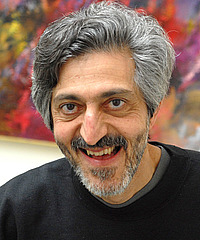Recently
1) Avi Wigderson won the Turing Award (See blog posts by Fortnow-here, Scott-here, Lipton-Regan here, and the ACM announcement here). The last time I could find when Fortnow-Gasarch, Scott, Lipton-Regan all blogged on the same topic was when Goldwasser-Micali won the Turing Award- see the blog entries (here, here,here). We rarely coordinate. For that matter, even Fortnow and Gasarch rarely coordinate.
2) My joint book review of G.H. Hardy's A Mathematician's Apology (1940) and L.N. Trefethen's An Applied Mathematician's Apology appeared in SIGACT News.
These two events would seem unrelated. However, I criticize two points in Hardy's book; and those two points relate to Avi. The book review is here.
POINT ONE: Hardy says that Mathematics is a young man's game and that if you are over 40 then you are over the hill. He gives some fair example (Gauss, Newton) and some unfair ones (Galois, Ramanujan who died before they were 40.) Rather than STATE this fact he should have made it a CONJECTURE to be studied. I would make it two conjectures:
Was it true for math that Hardy would know about? Since most people died younger in those days, there might be to small a sample size. Euler and Leibniz might be counterexamples.
Is it true now? AVI is clearly a counterexample. Other modern counterexamples: Michael Rabin, Leslie Valiant, Roger Apery (proved zeta(3) irrational at the age of 62), Yitang Zhang (bounded gaps between primes at age 58, which, alas, is not a prime-- would have been really cool if it was a twin prime), Louis de Branges (proof of the Bieberbach conjecture at 51), Andre Weil, Jean-Pierre Serre. Is that enough people to disprove Hardy's conjecture?
Despite the counterexamples I provided, we have all seen some mathematicians stop producing after a time. I offer two reasons for this
a) (Andrew Gleason told me this one) A mathematician works in a field, and the field dries up. Changing fields is hard since math has so much prereq knowledge. CS has less of that problem. One can see if in the counterexamples above, and in other counterexamples, the fields they were in didn't dry up.
b) The Peter Principle: Abosla is a great research so lets make her department chair!
My conjecture: The notion that math is a young mans game is false.
POINT TWO: Applied Math is dull. Trefethan's book makes a good counter argument to this. I will say something else.
Even in Hardy's time he would have seen (if his head was not so far up his ass) that math, applied math, physics, compute science and perhaps other areas interact with each other. It is common to say that things done in pure math get applied. However, there are also cases where pure math uses a theorem from applied math. Or where Physics MOTIVATES a topic in pure or applied math. The boundaries are rather thin and none of these areas has the intellectual or moral high ground. There is the matter of personal taste, and if G.H. Hardy prefers pure math, that's fine for him. But he should not mistake his tastes for anything global. And is well known, he thought pure math like number theory would never apply to the real world. He was wrong about that of course. But also notice that Cryptography motivated work in number theory. I am not sure if I would call AVI's work applied math,but it was certainty motivated by applied considerations.


